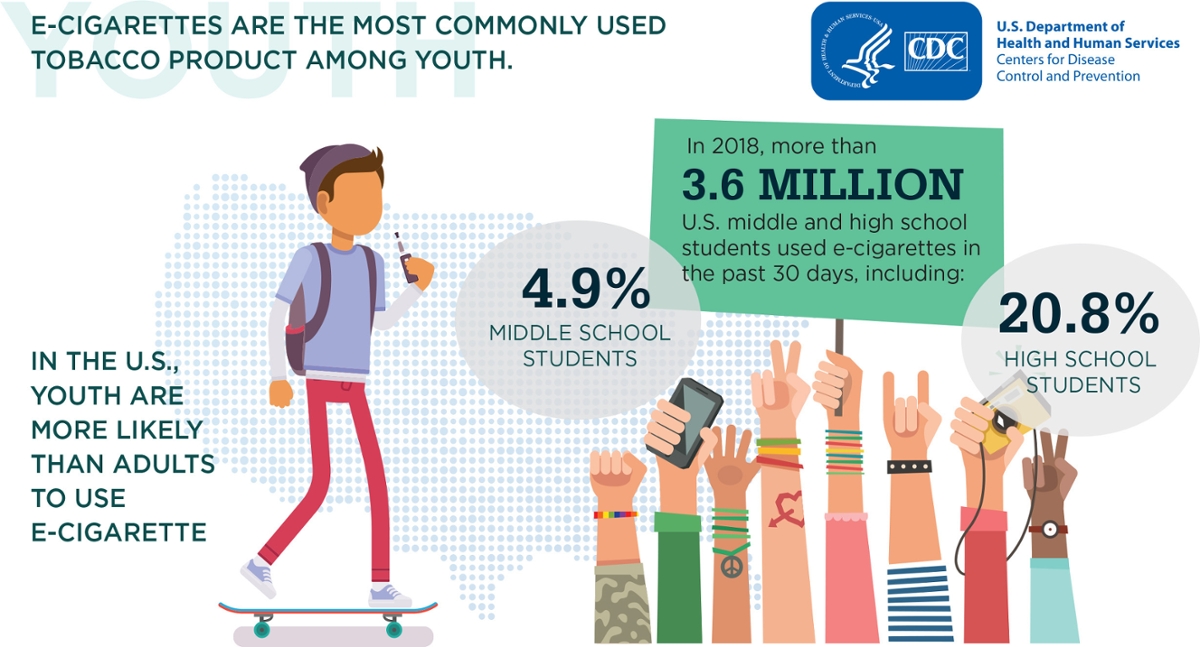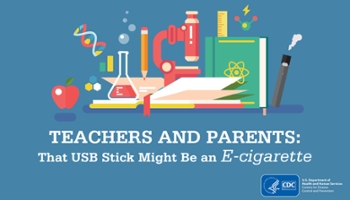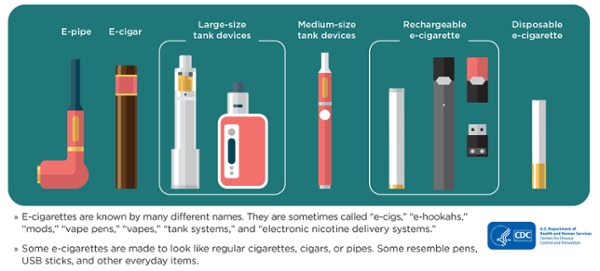Amid a Teenage E-cigarette Epidemic, Public Health Professionals Urge Action


James M. Loy, Miami University
Electronic cigarettes are spreading like a wave across this country. After first appearing on the west coast in 2015, they quickly consumed the Texas central plains. And by the time they hit the east coast, they had already fanned out down through the south, and up into the northeast.
So now, just three years after hitting the market, e-cigarettes are being used by teenagers almost everywhere. The FDA has called this growing phenomenon an “epidemic,” and it’s a major concern among those who hope to stop the momentum now.
 Dr. Lauren Bartoszek
Dr. Lauren Bartoszek“When you say ‘phenomena’ that really is truly what it is,” says Dr. Lauren Bartoszek, Miami University visiting assistant professor of public health. “They're being used at just astronomical rates among youth.”
According to the U.S. Surgeon General, e-cigarettes -- also known as e-cigs or vaping -- are now the “most commonly used form of tobacco by youth in the United States.”
Data shows that more than 40% of high schoolers have used e-cigarettes at least once. Over 15% of youth have reported ongoing use in the past 30 days. In some areas, that number is approaching 20%. And when compared to 2017, usage is up 78% among high schoolers and nearly 50% among middle schoolers this year alone.
“These data shock my conscience,” FDA Commissioner Scott Gottlieb said in a recent statement. And many public health professionals believe it will only get worse before it gets betterWhat you should know
In a time when the battle against smoking has largely been won, it’s surprising to see another nicotine threat emerge so quickly, especially one that can be so alluring to some, and yet so mysterious to others.
E-cigarettes use a battery operated electronic nicotine delivery system to inhale a vaporized aerosol. These devices often resemble USB flash drives, which are easily concealed and often tricky for non-users to recognize. And the chemical liquid that generates the vapor also comes in colorful pods that include an array of enticing flavors such as creme brulee, cool cucumber, mango, and more.

Because e-cigarettes claim to be a “safer” alternative to traditional cigarettes, they were initially aimed at adults who hoped to quit smoking. However, they were quickly co-opted by adolescents, and not only because of the attractive flavors or the sleek and trendy USB-like devices.
Teenagers also, very often, miscalculate the risks involved.
“Perception of harm is super low,” Bartoszek says. “The hard part, from a public health standpoint, is that they are ‘safer’ than cigarettes. Yes, you're not inhaling smoke. So the tar and the actual blackened lung is not there. But they're not safe.”
Even though e-cigarettes are so new that long-term health effects are still unknown, there are decades of nicotine-based research that build a strong case against vaping.
“What I don't think people know is how toxic [nicotine] truly is,” says Bartoszek. “The e-cig uses something called a nicotine salt. The nicotine itself is so concentrated that one pod can be equal to a pack of cigarettes as far as nicotine levels. On porous skin, it can actually be potentially fatal. So in this salt form, there's a slew of other problems.”
And the colorful flavoring used is also worrying.
These chemicals have been approved by the FDA for ingestion. But not for inhalation. Among e-cigarette users, there are documented cases of “popcorn lung,” a disease that causes coughing, wheezing, and bronchiole scaring.
“They call it popcorn lung because the only other place they've seen this health outcome was in people who worked in factories that made popcorn,” Bartoszek says. “They were inhaling the fake butter flavor. Butter flavor is okay for your stomach. But your lungs cannot process that.”
These problems are all part of a growing list of bad news. But there’s good news too. Because there are already massive efforts underway to curb these new vaping trends, and, hopefully, before they ever become as devastating as smoking.
A rising resistance
In the past, it took researchers over 20 years to definitively link cigarette smoking to lung cancer. This time, the CDC and FDA would rather not wait that long. And the sheer speed at which both organizations are mobilizing is encouraging.
While the CDC continues to conduct in-depth medical research, the FDA has cracked down hard on JUUL Labs, the dominate e-cig manufacture. Alongside aggressive scrutiny of marketing and advertising practices, and more, the FDA just enacted expansive new anti-tobacco measures aimed prominently at underage vaping. Soon, the FDA also plans to ban flavored e-cigarette sales in stores.
And additional efforts are also coalescing in local communities all around the nation.
At Miami, Bartoszek, along with her research colleagues Rose Marie Ward, Phillip Smith, and Paul Branscum, have received funding to examine e-cigarette use among college students. And Bartoszek also serves as the advocacy coordinator for Activating Substance Abuse Prevention (ASAP), a coalition in Norwood, OH, which recently acquired $75,000 from Interact for Health to support Tobacco21.
Tobacco21 is a policy designed to help local citizens to push back against the spread of e-cigarettes and other tobacco-related products. The goal is to raise the age required to purchase such products from 18 to 21.
“Tobacco 21 is really beautiful because it is local,” Bartoszek says. “The government, in terms of FDA and CDC, are doing their due diligence. They're doing all the scientific work that we need to say, ‘This is bad. Here's what's in it.’ But until we get a blanket policy, it's got to come from below.”
The policy is now active in over 360 cities across the country. In Ohio, Cleveland and Columbus have already passed Tobacco21, and support is building in the Cincinnati and Oxford areas.
As a community-led ordinance, it only takes a local city council vote to pass. So health professionals strongly encourage local residents to get involved, and supporting Tobacco21 is a great way to begin. But there is more you can do.
“Number one,” Bartoszek says. “People should start doing their research. There are some amazing fact sheets and informational tools from the Surgeon General. E-cigs are not an FDA-approved cessation tool. They are not safe. So being a self-educated consumer is step one.”
Number two. Parents should talk with their children about e-cigarettes. And Bartoszek suggests trying to start casual, non-judgment conversations.
“We find, typically, that better parent-child communication lends itself to being a protective factor,” she says. “Kids are less likely to report using drugs of any kind. So try to keep an open line of communication, as opposed to looking for something, or trying to find their source.”
A good approach, she says, may be to broach the topic by saying something like, “Hey, this e-cig thing is really taking over. Do you know what vaping is? Do you know if it's good for you? Do any of your friends do e-cigs?”
Because, odds are, some probably already do.


